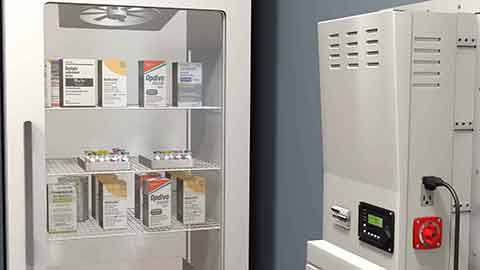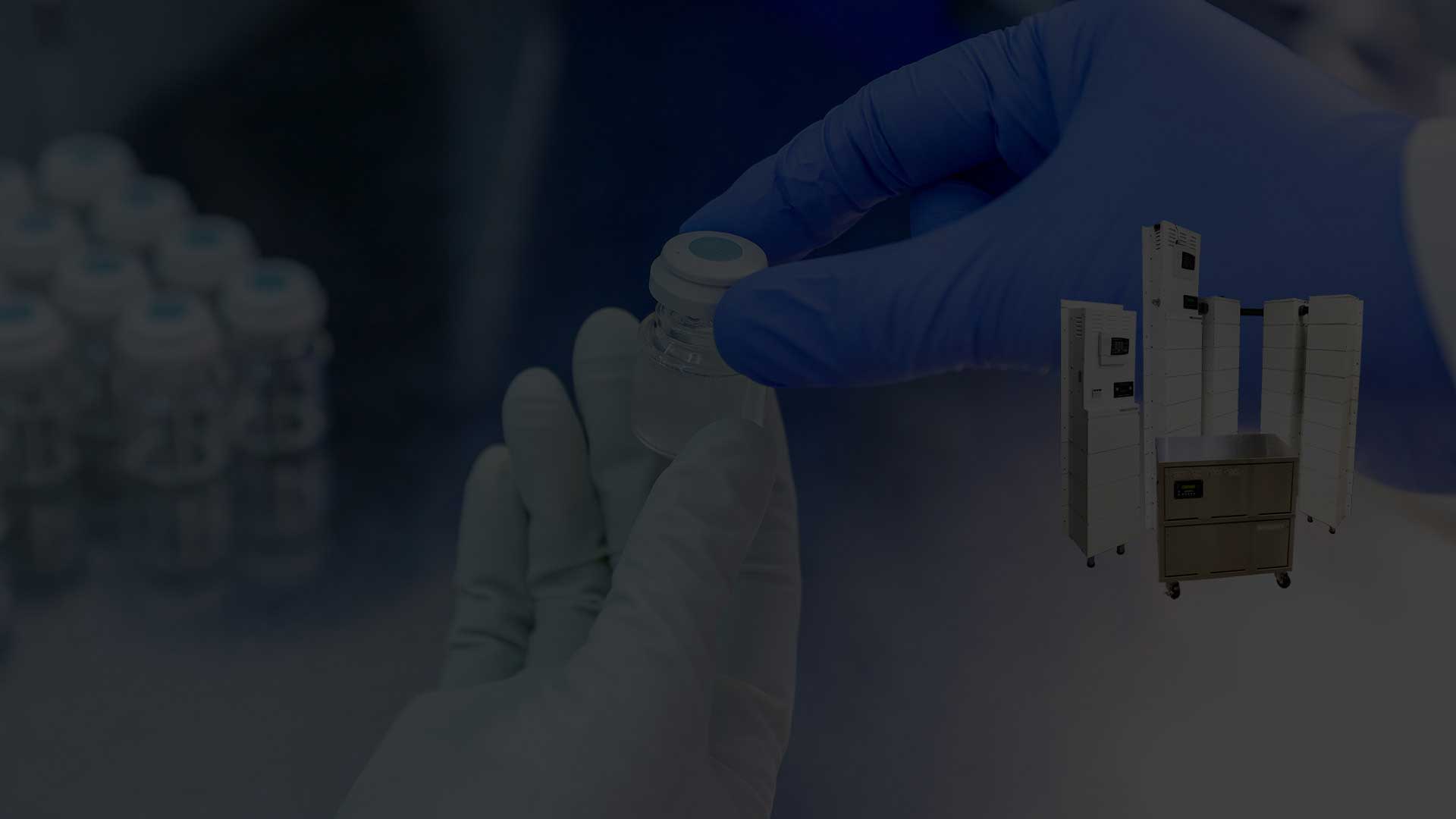Power Outage Emergency Response Plans for Hospitals
On Wednesday, September 28, 2022, Hurricane Ian came ashore in Southwest Florida, bringing 150mph winds, catastrophic flooding and storm surge before crossing the state. But unfortunately, it did not stop there.
After re-entering the Atlantic Ocean, it made a second landfall on Friday, September 30, in South Carolina, wreaking even more havoc. Thousands of homes and businesses were severely damaged or destroyed, leaving them unable to receive utility power.
While more than 44,000 workers from at least 33 states and the District of Columbia joined forces to respond to Hurricane Ian in Florida, many homes and businesses— including healthcare facilities—had no chance of escaping its path. This unfortunate event has, once again, turned the spotlight to the power outage emergency response plans that healthcare facilities have—if they have one at all.
However, power outages happen due to various natural, technological, and human-caused threats and hazards—not only hurricanes and other extreme weather events. Even these less “extreme” power outages propose a heightened risk to patients in hospitals, skilled nursing facilities and long-term care facilities.
In addition, for facilities like primary care doctors offices, who carry inventory such as vaccines, lab materials or other valuable, irreplaceable pharmaceuticals, a power outage could result in a total loss if proper refrigeration of these items is not addressed.
Thus, it is vital to prepare for power outages adequately and BEFORE the power goes out. Below, we’ll discuss steps to take in order to update and create the ultimate power outage emergency response plans for healthcare facilities and what to do if you experience a loss of power while on the job.
What Happens When Healthcare Facilities Experience a Power Outage?
Life Support/Critical Care/Recovery Room Equipment
Patients in critical conditions depend on machines to keep them alive. However, every machine used in a hospital requires electricity to function.
Simple.
But this dependence means that even a second of downtime can result in a life-or-death situation for a patient if the facility cannot ensure constant operation of this critical equipment.
Even if a facility already has a backup generator system, legacy systems powered by fossil-fuels often take minutes to fully engage and begin providing power. This means minutes of downtime for critical equipment. However, modern battery powered backup systems instantly and seamlessly supply power to machines during a power outage—making them a non-negotiable investment for hospitals looking to drastically improve the speed and effectiveness of their emergency response.
Disrupted Surgeries and Procedures
A power outage during a surgical procedure is one the highest risk events that an office-based surgery center (OBS) or ambulatory surgery center (ABS) can be exposed to. Without proper preparedness, you can expose vulnerable patients to more severe injury, hinder patient outcomes and increase risk of injury/endanger staff .
However, with an efficient power outage emergency response plan and equipment (like the instant battery backup solutions linked above) surgical teams can continue operating amid a power outage. This allows them to either finish the procedure or, bring the patient to a safe and stable place—with the surgery or procedure being completed at a later date.
While the amount of time may vary depending on state, the scope of your facility and the type of medicine you practice, many accrediting bodies require a minimum of 2 hours of instantly available backup power for type 1 and type 3 Essential electrical system.
Legal Exposure, Financial Risk and Accreditation for Medical Facilities
A lack of proper emergency response plan can ultimately result in legal headaches or loss of the licensure accreditation needed to practice medicine and operate a facility. Additionally, no facility wants to be associated with the potential for negligence lawsuit as it could harm their reputation and potentially jeopardize their ability to receive funds from insurers, Medicare, or participate in programs such as Vaccines for Children (VFC).
All of these penalties can pose a significant financial risk for facilities—on top of any potential money needing to be paid out as a result of settlements or loss of revenue due to needing to shut down.
For reference, according to the Journal of American Medical Association, the current overall average payout for a medical malpractice lawsuit is $329,565.
Meanwhile, across the healthcare industry, power outages costs on average $60,000 a year per facility according to consultancy firm E-Source.
An instant backup power solution starts at only $3,300 dollars—a fraction of these costs and well worth it to ensure an emergency system is in place.
How To Develop an Effective Power Outage Emergency Response Plan
To prepare your facility and begin forming your own unique plan, several measures can be taken which, as a healthcare provider, will improve your overall emergency response. Some of these include:
1. Surveying And Testing Your Current Backup Power Solutions & Standby Power Systems.- Analyzing all system components and hazards likely to impact your facility.
- Inventorying all critical electronic devices and notating which do and do not have a backup power supply.
- Mapping out portions of your facility that will be on backup power during an outage and those that will not.
- Having a list of backup requirements from all licensing and accreditation agencies.
- Create a load-shedding scheme where you determine which vital systems must remain powered and which ones to take offline during a power outage.
2. Perform a detailed assessment of equipment.
We recommend estimating how long current equipment is scheduled to be in use for and develop modernization plan to phase out use of older equipment. Additional assistance from an electrical contractor or engineer can aid this assessment—which will determine which electrical systems, appliances and current backup power solutions need upgrades or reconditioning. Note: this may include coordinating/acquiring temporary replacement backup systems for your facility during an extended power outage. Record the time frame for fulfilling this deliverable, such as within 12 hours or 24 hours of the request.
3. Ensure you have the most up-to-date contact information for your utility company/manager.
You should also have the correct phone number for your utility companies after-hours on-call representative or account manager, who can help you with updates on estimated power restoration times after an event.
4. Ensure that your utility provider has current contact information of facility staff
As they will liaise with during an emergency that triggers a power outage. This should include alternative contact phone numbers and cell numbers for the people in question. Also, ensure that you have a staff member available around the clock to provide access to utility crews who may need to inspect electrical components within the facility before restoring utility power after an extended outage.
5. Develop a standard operating procedure for the transition between utility and emergency power generators.
Also, ensure you designate the parties responsible for the required actions. Share the SOP with your utility power providers and ask for feedback. Also, update the protocol annually and ensure all facility staff, including electricians, are aware of the document*.
Download Your Free Emergecy Response Checklist!
Where to Source a Battery Powered Backup System as Part of an Emergency Response Plan for Health Facilities
A Medi-Product’s battery backup power system is line-interactive. This means that while the power from the utility company is on, the system stays in standby mode and power passes through to your appliance while simultaneously keeping the batteries charged. This ensures emergency power sources aren’t accidently feeding back into the grind and makes them much more reliable—making them the perfect emergency power supplies.
Then, as soon as the battery backup system senses a loss of utility power, even for an instant, it begins using battery power so there is no interruption. Once utility power is restored, the system automatically recharges the batteries and feeds them back to the unit it supports.
Custom-sized and built to meet your exact needs, a battery backup system can run for as little as 15 minutes as a bridge power source, or for 8, 12, 24 hours or even 48-hour backup run times.
To learn more, and to start sizing a custom system for your facility, schedule a consultation with us today to get a clearer picture of how our battery backup systems can help you with your power outage emergency response plan.
Our product experts only need a picture of your appliance’s name plate or power label and information about how long you want your system to run for. Then, they can design for you the perfect backup power solution for your emergency preparedness plan.


